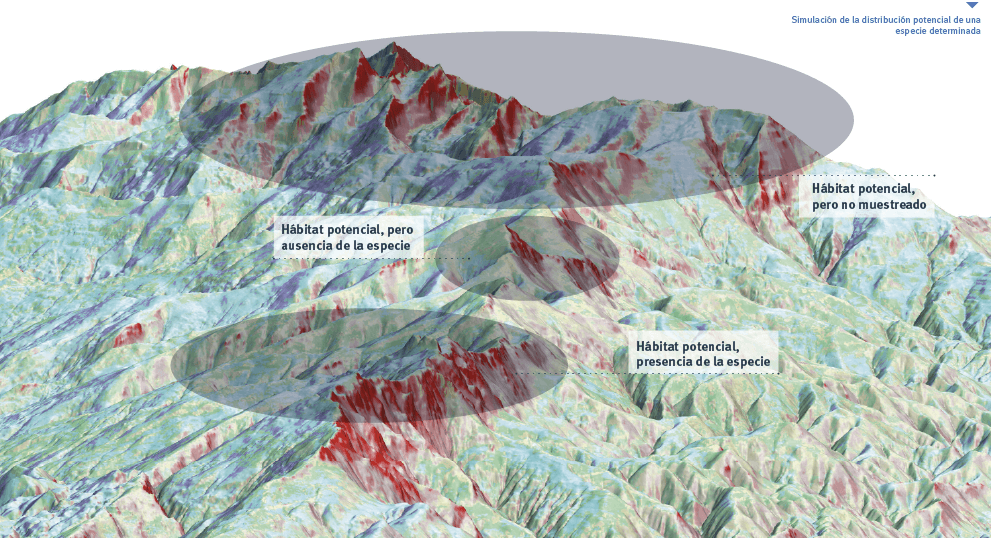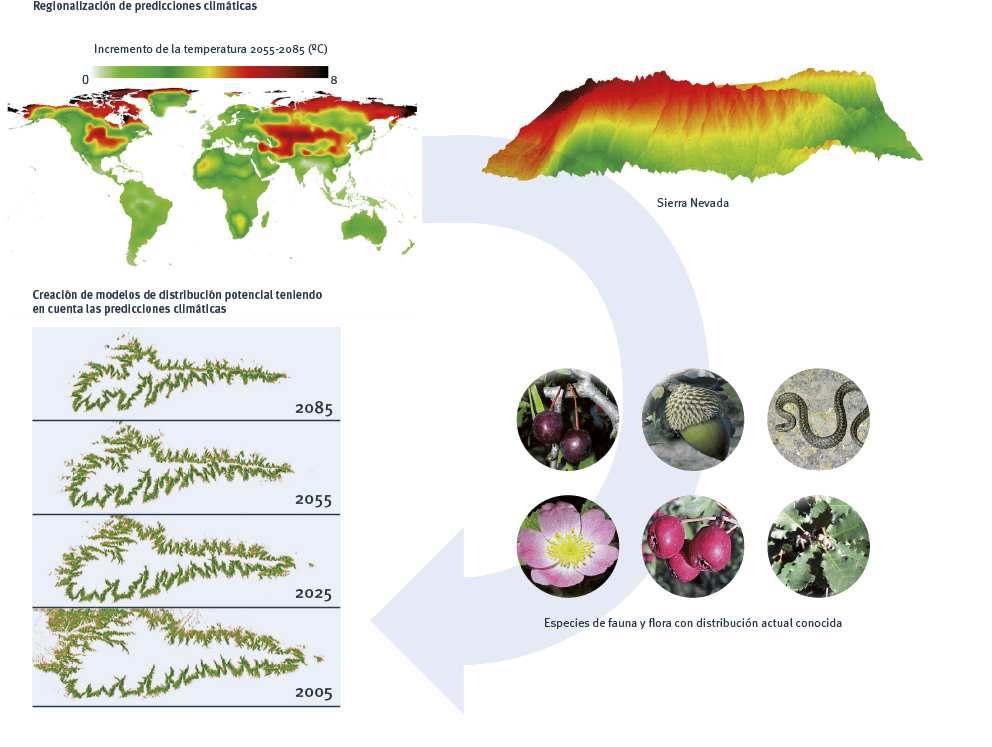Aims
The aim of this methodology is to simulate changes in the geographic distribution of species of flora and fauna in Sierra Nevada according to different scenarios of climatic change in order to compile data to be used for improving adaptive management plans for the natural protected space.

Method and effort
With climate change, the distribution limits of mountain species will move in elevation, ascending or descending with temperature. For the low- and medium-elevation species this situation implies the opportunity to colonize new habitats, while the species of the high summits may be condemned to disappearance.
Climate-change simulations combined with modelling techniques for species distributions enables the changes in spatial distribution of species to be simulated according to different scenarios. The results of these simulations facilitate the design of strategies for management and conservation of biodiversity.
The working methodology requires:
- Records of species presence acquired by the different data-gathering protocols included in the monitoring programme and other conservation plans.
- Simulated future climate maps according to different climate-change scenarios. Currently, we have maps of 10-m spatial resolution and 10-year temporal resolution according to the IPPCC A2 and B2 scenarios using the CGCM2 global circulation model formulated from the data provided by the State Weather Agency and Foundation for Climate Research.
- An automated workflow called MODPLAN, which coordinates the execution of the different software packages required to generate simulations. MODPLAN, a work flow designed with Kepler software, which uses different programs to execute the models MaxEnt, OpenModeller, GRASS GIS, and R. The results consist of vectorial files (shapefile) of polygons with the prognosticated shapes of the populations of species under study at 10-year intervals for each climatic scenario considered.

Periodicity
This methodology does not require a specific periodicity. It can be repeated semi-automatically when confronted with any updating of the technical means or availability of new information on species distribution.
References
Araújo, M.B. y New, M. 2007. Ensemble forecasting of species distributions. Trends Ecol. Evol., 22(1): 42–47.
Benito, B., Lorite, J. y Peñas, J. 2011. Simulating potential effects of climatic warming on altitudinal patterns of key species in Mediterranean-alpine ecosystems. Climatic Change, 108(3): 471-483.
Guisan, A. y Thuiller, W. 2005. Predicting species distribution: offering more than simple habitat models. Ecol. Letts., 8(9): 993–1009.